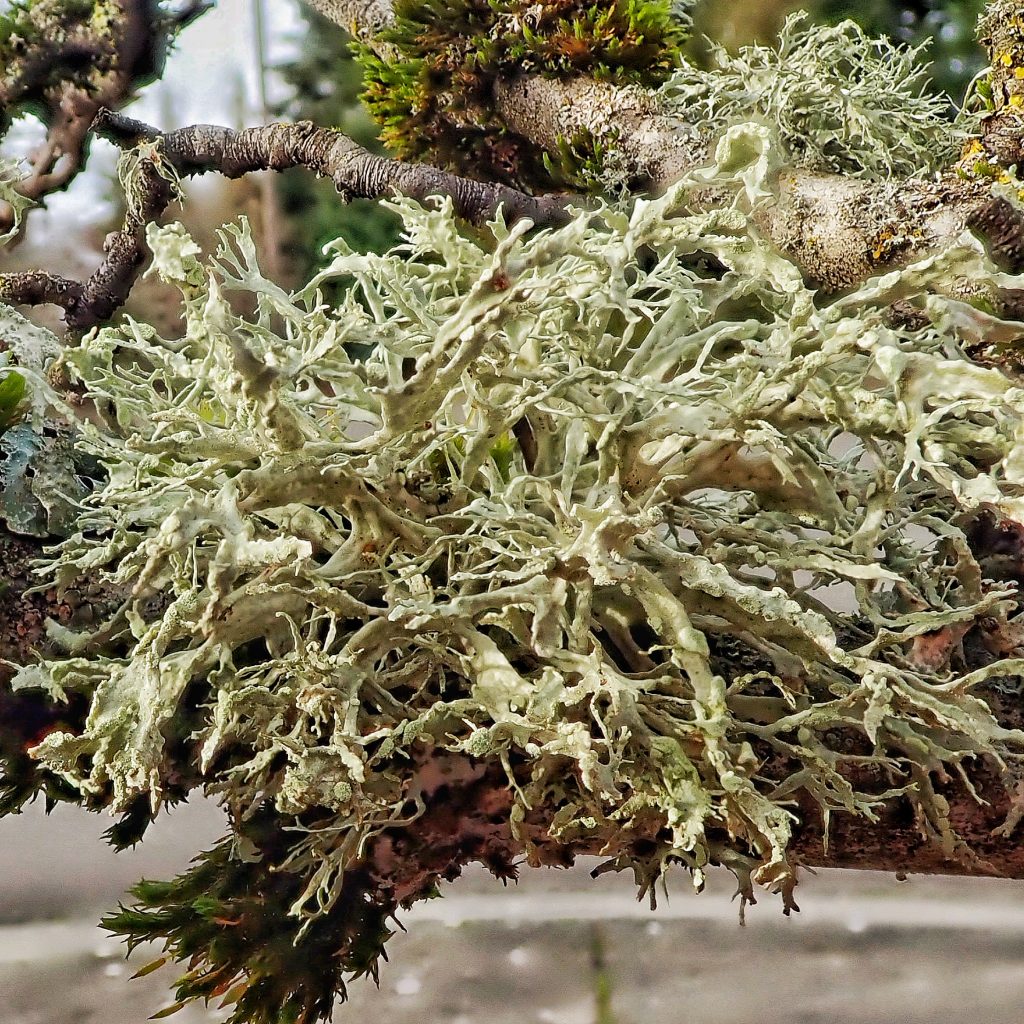
As I mentioned in yesterday’s post on Evernia prunastri, I’ve been misidentifying Ramalina farinacea as E. prunastri for 2 years. But now that I’ve made the effort to distinguish them I find that they are only superficially similar, and are not difficult to tell apart. And the upside is that now there is an additional ‘old friend’ on nearly every tree I see in the Portland Metro area.
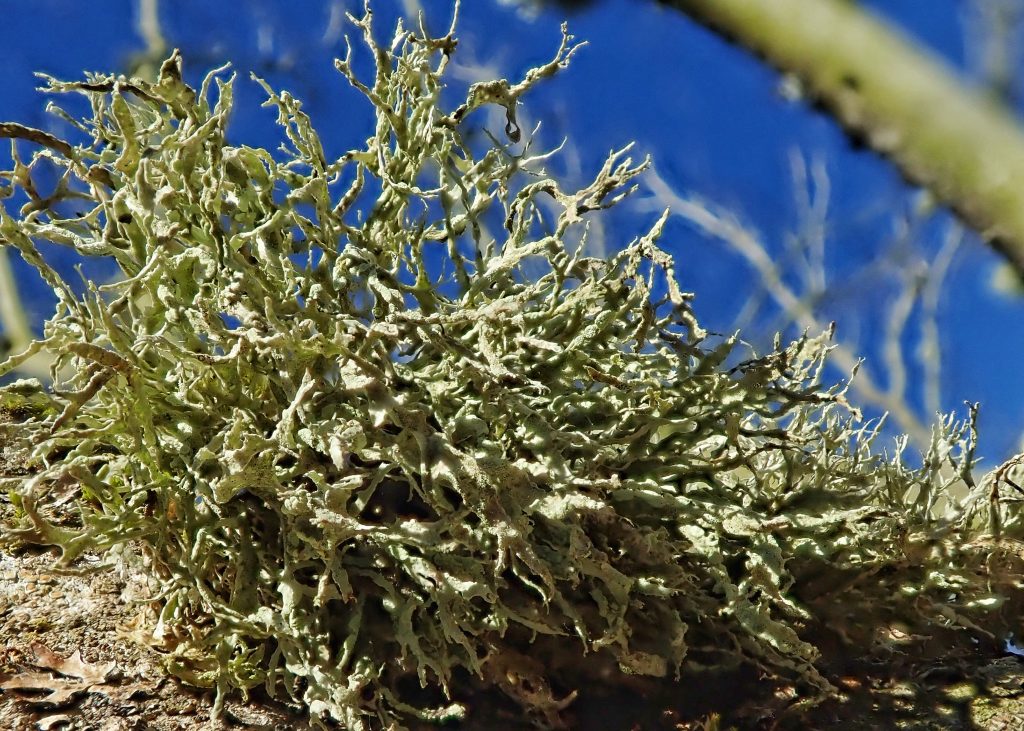
Ramalina farinacea has been found to harbor two different species of Trebouxia algae as photobionts. One performs best when it is hot and sunny, the other when it is cooler and cloudier/shady. It is unknown at present how widespread this adaptation/association is amongst lichens, but it appears to be omnipresent in Ramalina farinacea across the globe. That seems to me like a remarkable adaptive characteristic, especially in our region’s climate with its constant flux, and is possibly one reason for the flourishing of R. farinacea in so many different habitats in the PNW.
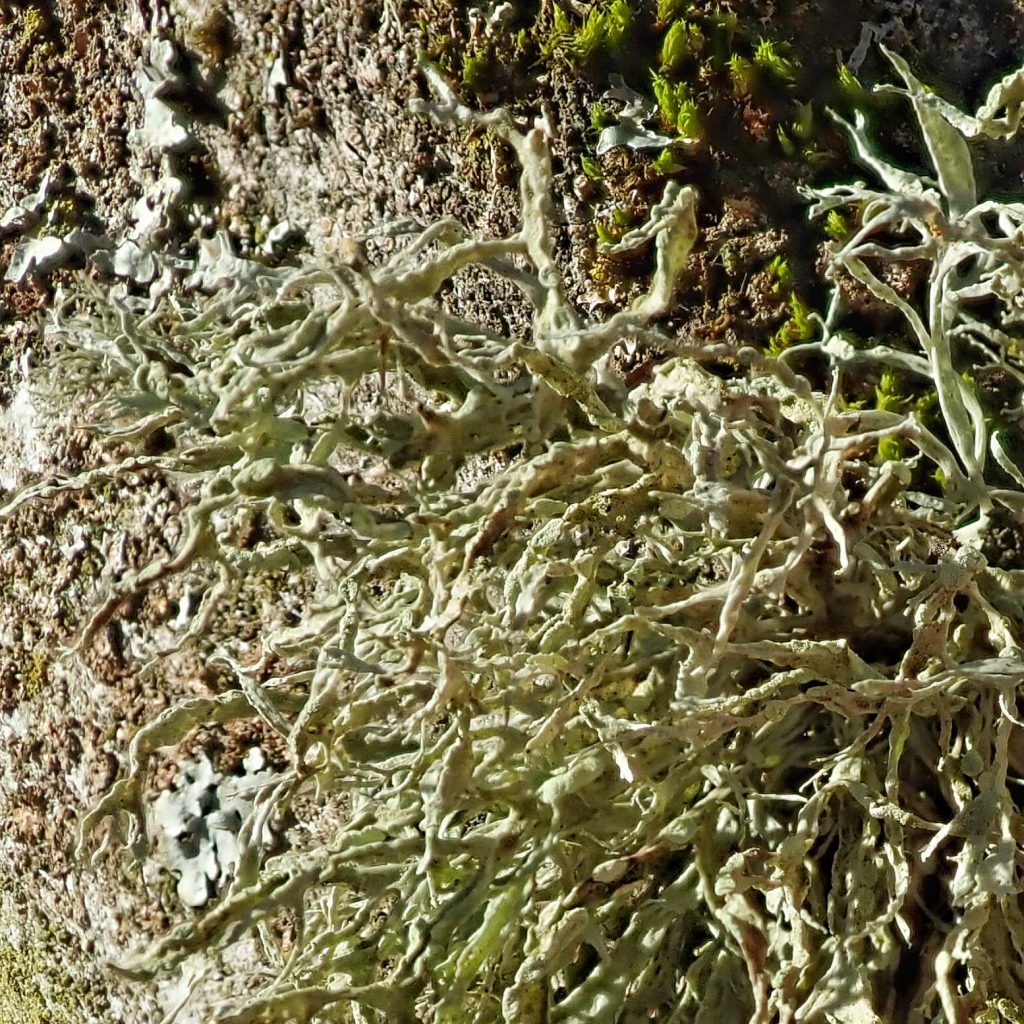
There are potentially five sp./ssp./races of this lichen based on different chemical metabolites. The most common one found as an epiphyte in our region seems to be the one containing protocetraric acid, and that one continues to be called R. farinacea. But all 5 have been found in our region. Research is ongoing to determine taxonomic ranking of these different chemistries.
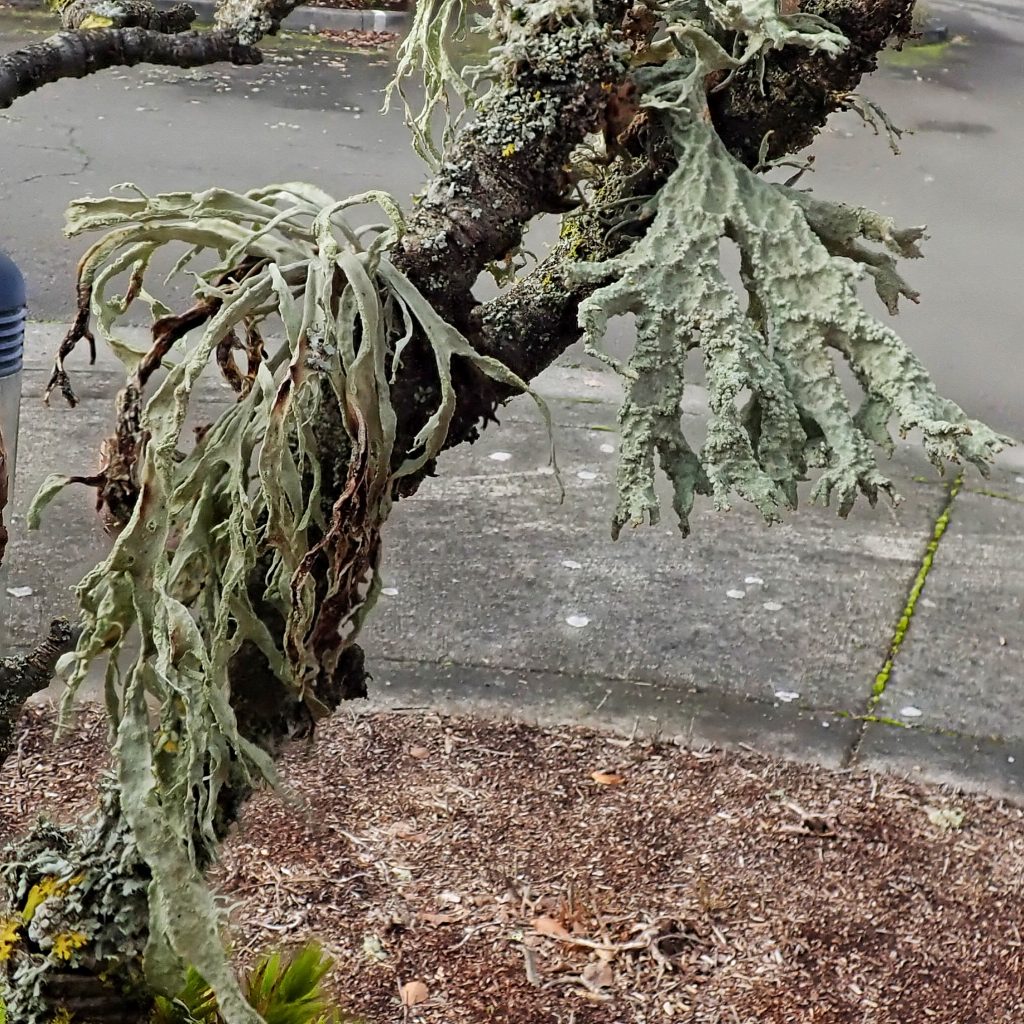
Description– Ramalina farinacea is bushy and pendant, with the same greyish green to pale green color on the dorsal and ventral surface (which makes it fruticose rather than foliose), and the thalli are relatively long, narrow, slightly troughed, and fairly smooth; R. farinacea has soredia only on the margins and the soralia are often large and oval to oblong; lacks isidia and apothecia; cortex K-, medulla P+orange;
Similar species– Evernia prunastri is noticeably but often subtly lighter on the ventral surface (which makes it foliose rather than fruticose); thalli are mildly ridged; soredia are present on margins and across the thallus; cortex K+yellow, medulla P- Ramalina subleptocarpha has apothecia.
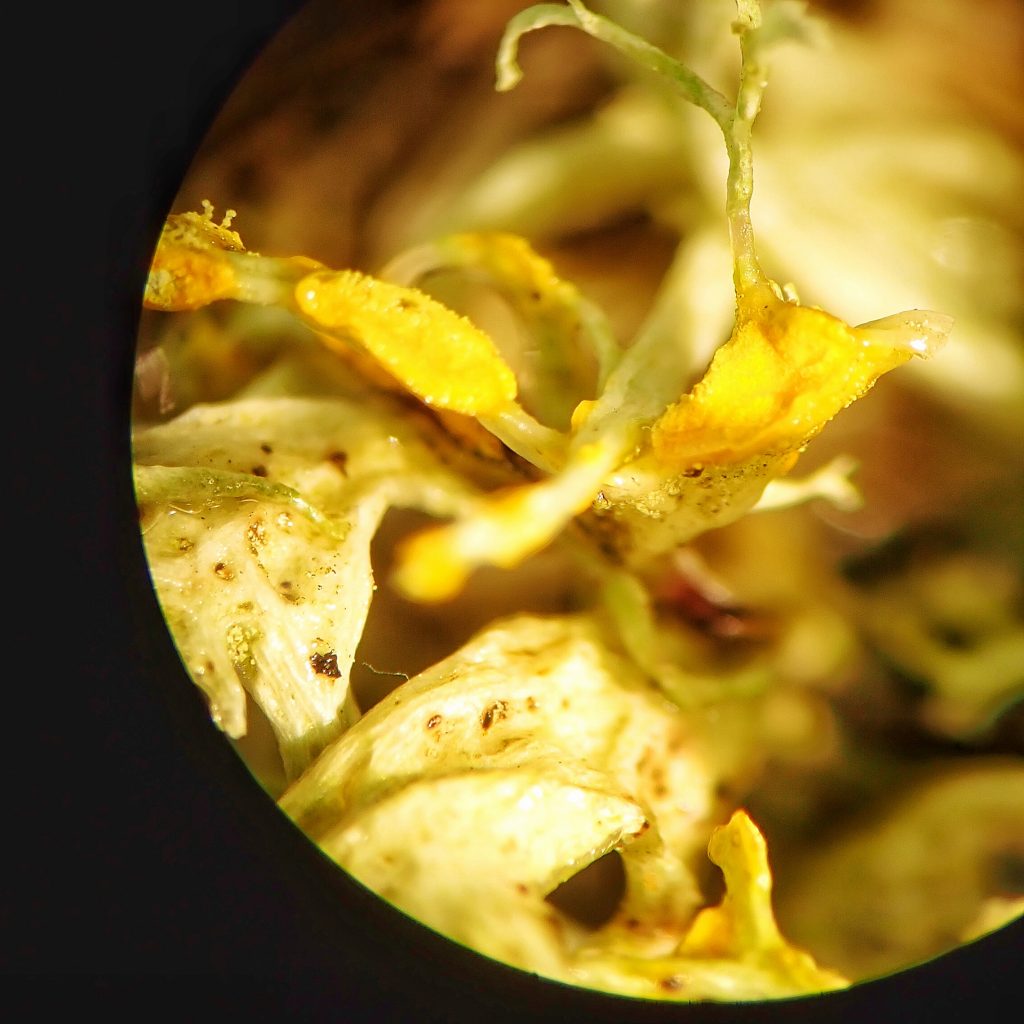
Habitat-Epiphytic on bark and trees in low to middle elevation forests, agricultural, and urban areas. Found rarely on rock, mostly in coastal or arid environments.
Range– Cosmopolitan; primarily west of the Cascades in our region; less abundant and found mostly along lowland watercourses east of the Cascades.
Etymology of names– Ramalina is from Latin for ‘branched cords’, and refers to the growth habit of this lichen. The specific epithet farinacea means ‘meal, flour’ in Latin, and presumably refers to the coarse textured soredia in the soralia along the margins.
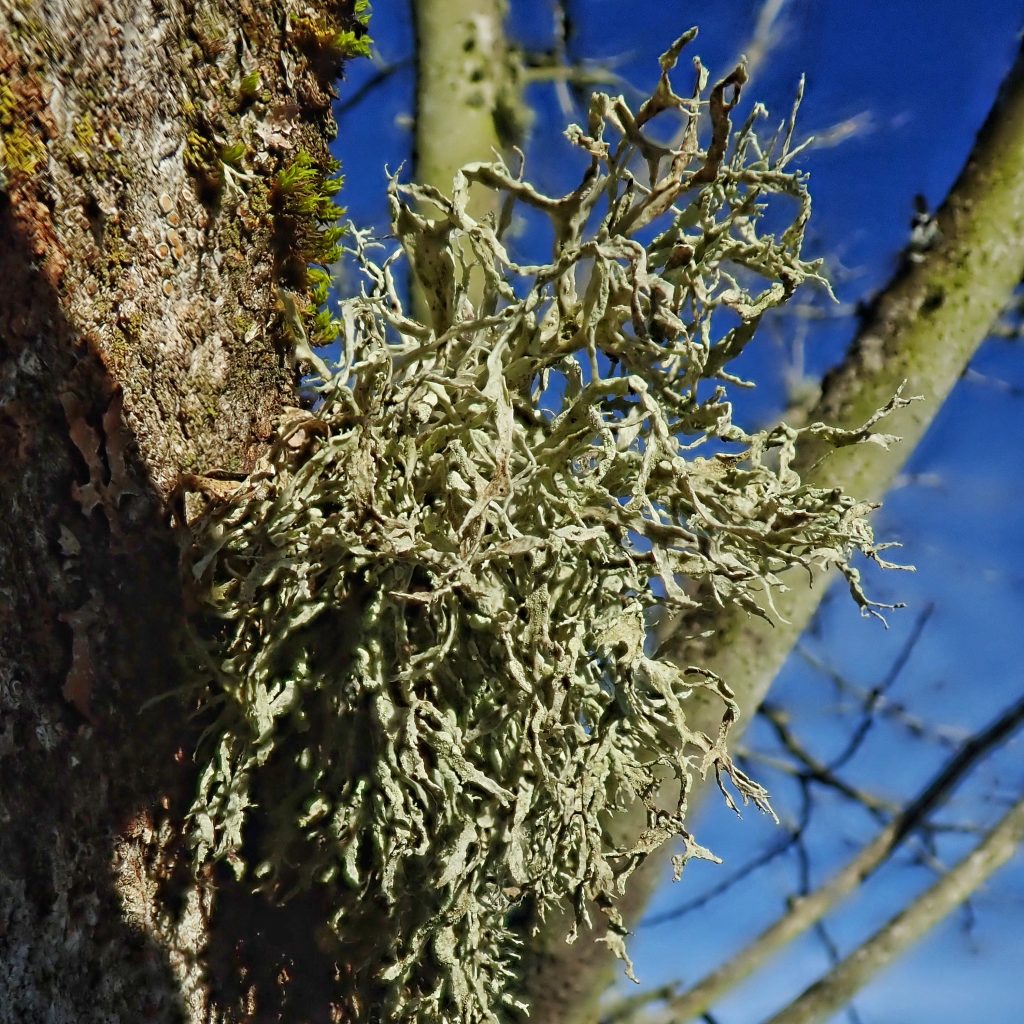
Ramalina farinacea – Common Macrolichens of the Pacific Northwest
https://lichenportal.org/cnalh/taxa/index.php?taxon=55426&clid=1122
https://www.jstor.org/stable/3242241
https://en.m.wikipedia.org/wiki/Ramalina_farinacea
https://www.waysofenlichenment.net/lichens/Ramalina%20farinacea
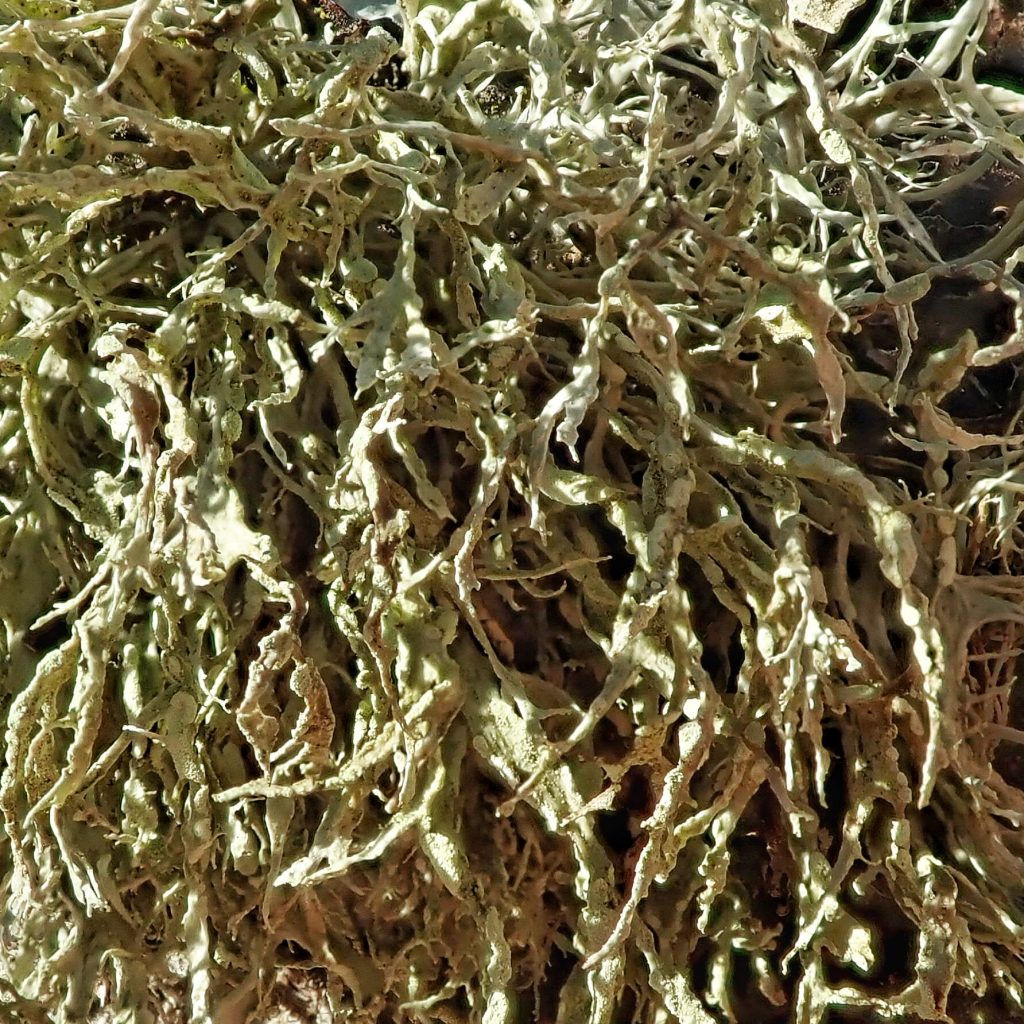
Well done!